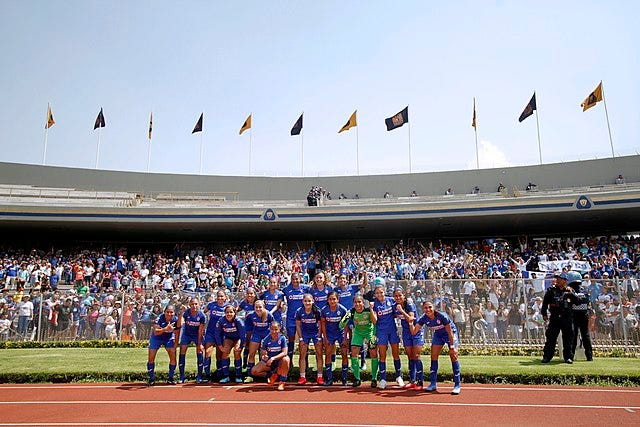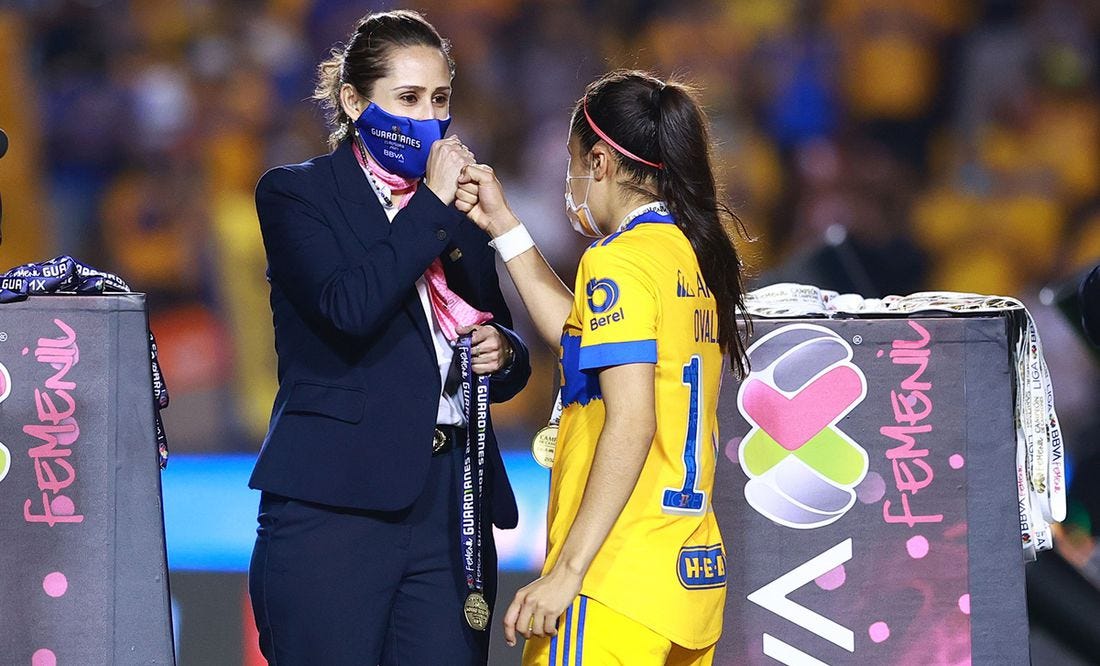Road to 2027: Why Mexico could be women's football's next big market
Women's football in Mexico is at a crossroads. The Liga MX Femenil is thriving, while the national team has been floundering. What's going on and what happens next? Those that know speak out.
By her own admittance, Mariana Gutiérrez accepts there was some “resistance” when the idea of a professional women’s league - which would mirror the structure of the men’s Liga MX - was mooted in 2016.
Women’s football in Mexico wasn’t in a good place. The national team finished bottom of its group at the 2015 World Cup, with no wins, and there was no professional league in place for its players.
Between 2013 and 2016, national team players were allocated to NWSL clubs, but their level at the time meant a lack of minutes on the field which hurt the national team.
Just over six years on, the Liga MX Femenil is thriving, with the backing of all the men’s teams, record attendances, a new sponsor deal with Nike, big international stars and a crowd culture to match any in the world in the women’s game.
Much of that is down to Gutiérrez, previously the supervisor to the National Amateur Leagues and a former player herself, who was part of a small group who set about creating the new professional league towards the end of 2016.
Since 2019, she has been the Head of the Liga MX Femenil and has seen the league go from strength to strength in that time.
Check out over 100 more unique stories in WFC’s Premium section, available for just £45 for 12 months, paid in one go, or a £6 a month rolling subscription.
All subscriptions come with a 7-day free trial to allow you to explore our full archive.
Plus, guarantee you everything that is to come over the next 12 months…
“Our governing body is the general assembly of the professional clubs,” she explains. “We are not part of the FA, we are part of a professional league and the league has a governing body. Each competition has a head and I’m the head of the women’s side.”
The idea behind the new women’s league was to replicate the men’s structure. All 18 teams were be required to financially support a women’s team, while there would be two parts to the season, just like the men, with the Apertura running from July to December and Clausura from January to May.
Only 16 clubs took part in the first season back in 2017, with two pulling out for financial reasons, but the league soon reached its quota of 18 teams.
“There were different players at the table,” she adds. “We had big clubs pushing a lot to make this happen. Before it was launched, there was a lot of lobbying and convincing and when we took it to the general assembly it was an anonymous vote.
“We changed the mindset. A lot of clubs knew they would have to spend a lot of money, but now the mindset is they are investing in the game because they see the outcomes. They see when they bring Jenni Hermoso or Charlyn Corral to their club. They see when they play OL Reign, Angel City, Lyon, AC Milan etc.”
Specific rules were put in place to aid the development of the national team. Every player had to be under the age of 23, bar allowing for two overage players, while four had to be under 17.
Every player had to Mexican and initially the league was split into two groups of eight. That has been adapted year on year as the league has grown, but it’s having an effect on the Mexican youth teams, where Gutiérrez points to the under 20 national team beating Germany for the first time. “Some people didn’t understand it, but it’s given us the outcome.”
Keep reading with a 7-day free trial
Subscribe to Women's Football Chronicles to keep reading this post and get 7 days of free access to the full post archives.


